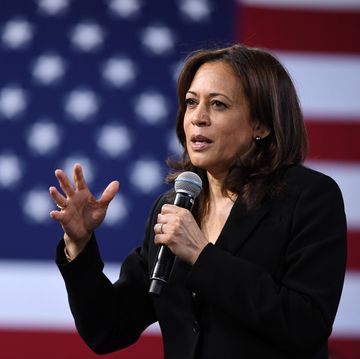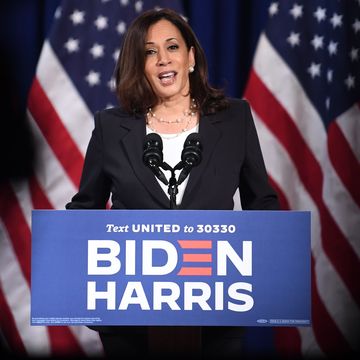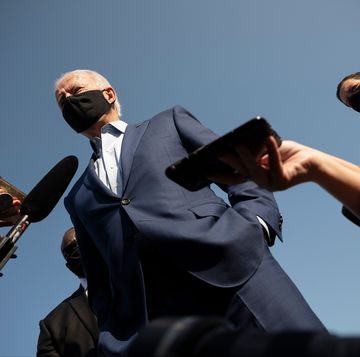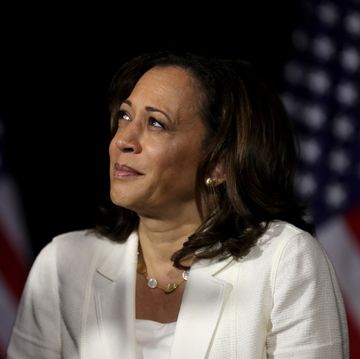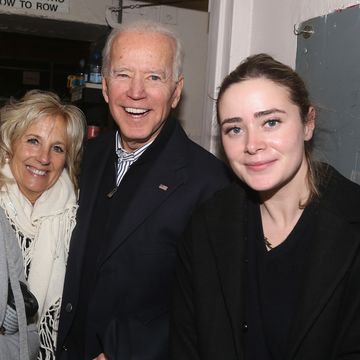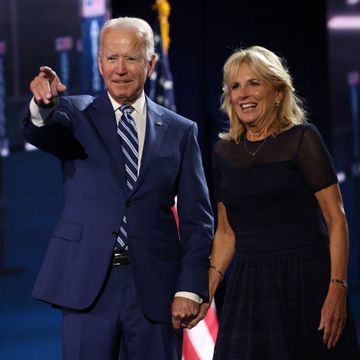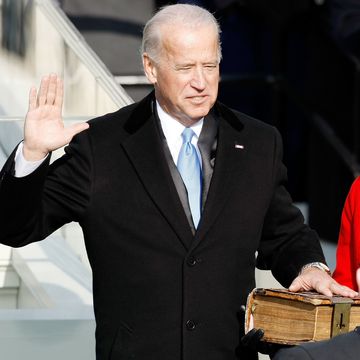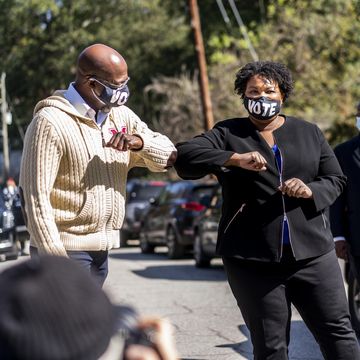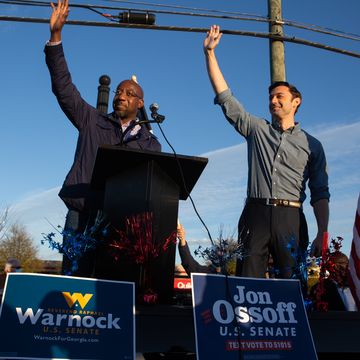Many communities across the country are celebrating the ousting of Donald Trump, but the road ahead is long. The fight for a world where people have what they need, without relying on police and prisons to keep us safe, does not start or stop with elections.
Abolition asks us to dream bigger than reform, because an abolition democracy is one that is predicated on community self-determination and collective care without relying on carceral systems and their technologies—prisons, detention centers, psychiatric wards, police unions, juvenile detention, and more. For those working to move away from such agents that prop up racial capitalism, abolition democracy is the vision and horizon. True democracy cannot coexist with these systems of control.
Abolition democracy is a concept put forth by W.E.B. Du Bois and developed later by prison abolitionist Angela Davis. Both Davis and Du Bois considered abolition to be "a positive project, not merely a negative one." In other words, abolition isn't simply eliminating oppressive structures, but erecting newly democratic ones in its place. It requires that we go beyond the ending of criminalization and toward the creation of economies, governments, and social structures predicated on addressing the root causes of harm, violence, and oppression without relying on police and prisons, and provisioning people with what they need to not just live, but live well.
For elections and votes to affect transformative change, we must make defeating white supremacist fascism the floor—not the ceiling. This is something abolition upholds as one of its ultimate goals. After a long and bitter election cycle has effectively removed Donald Trump from office, electoral wins like these can seem like the only avenue for tangible change. But abolitionists rely on a robust, experimental, and ever-growing toolbox of strategies from direct action to political education in order to effect the massive systems change required to dismantle policing, prosecution, deportations, and institutionalization.
In moving toward abolition democracy, a world without debt, rent, or premature death, we can organize for non-reformist reforms, which allude to policies—like the defunding of police budgets or ending police and corrections officer unions—that chip away at the size, scope, and power of systems of policing, militarism, and corporate theft without reproducing them in some other form. Unlike reformist reforms, which aim to improve or fix the existing system, non-reformist reforms seek all-out political, economic, and social transformation. And they allow us to make just transitions. As one of the most critical aspects of an abolition democracy, just transitions help us focus on building truly participatory governance systems that shift us from extraction, militarism, colonialism, and exploitation toward regeneration, caring, and ecological well-being. Organizations like Critical Resistance, Mijente, and The Red Nation are among those who have embraced non-reformist reforms.
In the absence of a deep, participatory, democratic process designed to facilitate community self-determination, our present-day formations of carceral governance have tried to violently suppress the voices of Black, brown, poor, disabled, and undocumented people, those most impacted by the prison-industrial complex. Yet, despite an electoral process that has disenfranchised more than five million people and left out the voices of survivors of intimate partner violence, certain non-reformist reforms were passed this election. In California, voters said yes to re-enfranchising formerly incarcerated people and no to increased jail time for certain violations. The decriminalization of hard drugs in Oregon and the legalization of recreational cannabis in South Dakota, New Jersey, Arizona, and Montana were celebrated as a step toward ending the war on drugs, a gateway for the criminalization of Black and immigrant people. Candidates who openly said “Abolish ICE" were elected to public office. San Francisco voters said no to mandatory police staffing levels. And voters in Portland, Maine passed one of the strongest facial recognition bans in history.
The reforms that were passed attempt to lessen the harm of a system that must be abolished by us. In some cases, they seek to undo harms caused by candidates on the ballot and, in others, they are simply a refusal of more terrible forms of policing. Organizing wholly outside the scope of electoralism created the conditions that enabled these reforms, which themselves are only partial steps towards justice. Even these changes could not have occurred without decades of protest, education, and work–and their story is not primarily an electoral one. They also happened alongside a slew of reactionary, carceral events, from the policing of voters and poll taxes on newly re-enfranchised voters to the arrests of Election Day protesters and the lack of a plan to free those incarcerated for newly decriminalized offenses.
The 2020 elections have proven that the fight against fascism will not win in a landslide, and that all forms of policing are the hallmark of a carceral status quo that will be preserved, regardless of which party is in power. As abolitionist law professor Amna Akbar has written, Democrats have been “willing partners in the neoliberal project.” Despite relying on Black and Brown voters to win, Democrats have continually invested in the carceral state and tough-on-crime policies, even going so far as to blame demands to “defund police” for hurting Democrats at the polls. Both candidates for the presidency have a history of supporting mass criminalization, prison expansion, and law-and-order legislation, while gutting health care, supporting fracking, and condemning protesters raising their voices against the violence of policing and prisons. The 2020 elections should be clarifying and radicalizing: This can move us to commit (or re-commit) to sustained grassroots organizing and power building.
While the Democratic party has put people on the back burner, in the streets “we’ve seen a movement embrace Black, Brown, and Indigenous people, queer feminism, and a horizontal leadership model that emphasizes deliberative, participatory democracy," as theorist Robin D.G. Kelley writes.
The COVID-19 pandemic has found its home inside prisons and detention centers—unsurprisingly the ideal incubators for the pandemic—where rates have surpassed those of the rest of the country. Now, as we enter the second wave of COVID-19, it is possible governments will adopt austerity budgets in line with what Ruth Wilson Gilmore characterizes as "organized abandonment"—the overarching political and economic divestment from social welfare, housing, and health care with simultaneous investment in the prison and policing industrial complexes. In New York City, for example, the city government is considering layoffs to pay for its pandemic response instead of scaling down its massive punishment project or canceling its plan to build four new mega jails. As they have all year, abolitionists will continue to name incarceration as a public health crisis and demand divestment. This is part of the work of realizing an abolition democracy. In the years and decades to come, organizers, educators, and artists will continue to push for systems change like this at all levels of the carceral state.
The last few decades show that, no matter the president, wages have gone down while hours have gone up. Law enforcement and surveillance technologies have expanded in reach as welfare systems have shrunk. These trends will require prefigurative organizing, vision, and strategy if they’re to change. Despite the Republican-dominated Senate and Supreme Court that will seek to dismantle reproductive health care, affordable housing, and many more of the changes we all need to survive sustainably on the planet, abolitionists will work to completely defund police budgets; stop jail expansion; build non-coercive care systems; empower and uplift the leadership of incarcerated and institutionalized people; render gang policing databases and surveillance technologies obsolete; break down family regulation and juvenile injustice systems; bolster mutual aid networks; and much, much more.
Prison-industrial complex abolitionists, practitioners, and teachers recognize that this is a system built by slave owners and settlers. This is why they seek to transform the system in the long-term, using elections as one tool among many. The centuries-long movement against police (and white supremacist vigilantes), violence, and mass criminalization set aflame by recent popular movements for defunding the police, and supporting land back, universal health care, and more, has been the terrain on which major electoral reforms have been able to pass. These popular movements, built by Black and queer abolitionists, inspire and mobilize people toward the things that will materially improve their lives, such as affordable and free housing, living wages, and safety without policing.
We must not let our imaginations, or our organizing, be constrained by the limitations of the ballot box. Although Americans voted against President Donald Trump this time, Trumpism will live on. For the vote to matter and effect lasting change against fascism, mass movements must take on carceral systems, which form one of the enduring institutional strongholds of an undemocratic government. For abolitionists, the next four years—and the decades after—will be about bringing more people into the groundwork of shaping and building the local, regional, and national power we want for a world without police, prosecution, punishment, and prisons.





